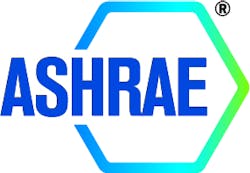On July 25, the U.S. Department of Energy published its preliminary analysis of Standard 90.1-2016, which establishes a model energy code for energy conservation standards for residential and commercial buildings; it is administered by DOE’s Building Energy Codes Program. The standard is developed, and regularly updated, by three private sector commercial-engineering membership organizations: ANSI - the American National Standards Institute; AHSRAE - American Society of Heating, Refrigerating and Air-Conditioning Engineers; and IES - Illuminating Engineering Society, an ANSI Standards Development Organization.
DOE’s preliminary conclusion: “The 2016 edition of the ANSI/ASHRAE/IES Standard 90.1 would improve energy efficiency in buildings subject to the code compared to the 2013 edition of Standard 90.1.” Of 121 proposed code changes (called “addenda”), DOE judged that 46 addenda would decrease energy use, five would increase energy use and 70 have no impact, viewed as administrative and clarifying changes.
Examples of “addenda” include metal coiling door air leakage, fenestration, building orientation and hotel guest room controls. According to DOE’s modeling, commercial buildings implementing the requirements of Standard 90.1-2016 would show national savings of approximately (compared to Standard 90.1-2013):
- 8.2 percent energy cost savings;
- 7.9 percent source energy savings, and;
- 6.7 percent site energy savings.
90.1 is a dynamic program — under “continuous maintenance,” to cite DOE. It is reviewed every three years. If ANSI/ASHRAE/IES propose changes, then DOE is required, by the Energy Conservation and Production Act, within one year, to review those changes and determine whether the revisions would, indeed, improve energy efficiency in residential and commercial buildings. In a way, DOE acts as the public’s agent, serving to confirm ideas and proposals from private business organizations. The 2016 edition was published last October, hence triggering this most recent DOE review.
When DOE’s preliminary assessment is finalized (likely in October), that conclusion (assuming it’s positive) requires action; this is not an academic review. Next, the states are required to review their commercial and residential energy-efficiency building codes. Within two years, these state commercial codes must be updated, reflecting the new 90.1 standards; residential codes do not have to be similarly updated but state officials still must explain to DOE why updates are not necessary. Additionally, EPCA requires DOE to establish building energy efficiency standards for all new federal buildings and those standards must reference the latest model code edition.
Jeremy Williams is a specialist with DOE’s Building Energy Codes Program. Williams said the standards are important for, “anybody involved in the design and construction of commercial buildings.” He said the 2016 changes “really represent what is happening in the market. They are minimum levels of energy efficiency. In general, the (90.1) Committee has come to a consensus and is saying: ‘We’re ready for this to be our standard of care.’”
The July Federal Register notice started a public comment period, closing on Sept. 8. One might expect an extensive response to a set of standards that impact the entire national economy, state and municipal governments and critical energy, industrial and engineering sectors. That’s not the case, however, at least as this process has evolved. During the revision process, the goal is a consensus document, one that keeps long-term efficiency programs on track, but does so incrementally, without marked disruption. That approach seems to have worked; by Labor Day, DOE had received just two comments, both supportive, from the American Chemistry Council.
Some important 2016 addenda include:
- Technical changes affecting building envelope, mechanical and lighting systems;
- New climate zones (ASHRAE Standard 169), reassigning more than 400 counties based on updated weather data;
- Changes to envelope verification and more stringent prescriptive requirements for metal building roofs and walls, fenestration and opaque doors;
- Monitoring requirements for large electric-driven chilled water plants; and
- Requirements for replacement equipment, e.g., adding economizers or fan speed control, previously applicable just to new installations.
One change that deserves separate mention is a new compliance path, known as the Performance Rating Method, included in Appendix G, a section previously used only to document “beyond code” performance. The proposal now is that Appendix G would serve as a singular path to demonstrate both minimum code compliance and above-code performance. The Appendix G baseline would stay at a specific performance level, not expected to change with subsequent editions of the standard. These changes would allow a building of any era to be rated using a single method.
The 2019 review has already started. It’s important to note, of course, that this new round starts within a political dynamic and regulatory context that shifted dramatically in 2017. The current administration seeks a top-to-bottom review of the merits of federal regulatory programs, with energy-efficiency assessments high on the list. What has been an almost autonomous standards-setting process could be impacted, in a big way. Stay tuned.
Tom Ewing is a freelance writer specializing in energy and environmental issues.
About the Author
TOM EWING
Tom Ewing is a freelance writer specializing in energy and environmental issues.
